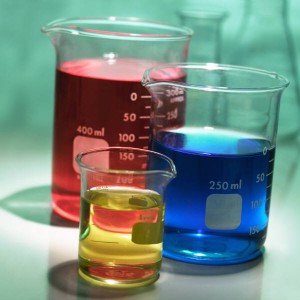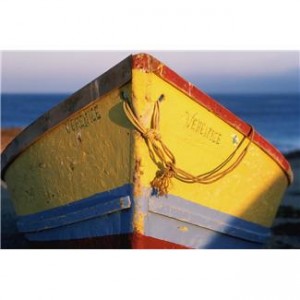
School is Back in Full Swing and so is our Learning Fun in Elementary Science! This activity can be done at home or in school but be careful with the pepper – it can make you sneeze and should never be put near the eyes! Have fun!
Pepper and Water Chase:
Not all liquids can be mixed together. Oil and vinegar are insoluble, meaning they do not mix together. Liquids that do not mix well together will try hard to separate into layers to form what chemist call a suspension.
In this activity students will observe two insoluble liquids and how they react around when mixed with each other.
Materials:
Milk & Food Coloring
Water & Pepper
Liquid Dish Soap
Flat pan with sides (cake pans work great)
Toothpicks
Instructions:
- In the pan add about a half-inch of milk to cover the bottom of the pan.
- Add several different colored drops of food coloring.
- Dip a toothpick into the liquid soap; be sure to make sure any excess soap drips are removed. There should be some soap on the tip of the toothpick.
- Place the toothpick (with the end with the soap first) in the center of the pan and watch the milk and food-coloring move.
(The milk may begin to swirl as it continues to try to move away from the soap on the toothpick). You can repeat this same activity using water and pepper. Placing the water and pepper in the pan and using a toothpick with liquid soap to make the pepper scatter.
How It Works:
The soap is made up of water and soap particles. In the milk the fat particles are hydrophobic meaning they do not like water and want to move away from the water in the soap. This is what is observed when the colors spread and the milk moves away from the soap on the toothpick. As the fat molecules in the milk continue to move away from the soap, they take the colors with them and form a swirling mixture of colors.
When teaching chemistry concepts that involve new vocabulary, it is helpful to create flashcards that can be posted in the classroom to reinforce the new word. For this activity, you can take a picture of the mixture, to remind the students about how insoluble mixtures do not mix or have a picture of an oil and water mixture. Science should not be a standalone topic, but instead can be incorporated in language and in math. To read more about integrating math into science, visit: http://www.edutopia.org/blog/integrating-math-science-creatively-ben-johnson
For Our Fun Learning Game about other great science activities, you can visit here!
http://www.science-lessons.ca/games/mammals.html
http://www.science-lessons.ca/games/space.html
http://www.science-lessons.ca/games/weather8.htm
http://www.literature-enrichment.com/
]]>
 A boat is able to float based on the amount of water it displaces or moves out of the way. When a boat pushes against the water, the water pushes back with an equal amount of force. Therefore, a wider boat is able to carry a heavier load than a long, narrow boat. Wider boats displace more water and therefore are held up by a greater water force, enabling them to carry heavier loads.
A boat is able to float based on the amount of water it displaces or moves out of the way. When a boat pushes against the water, the water pushes back with an equal amount of force. Therefore, a wider boat is able to carry a heavier load than a long, narrow boat. Wider boats displace more water and therefore are held up by a greater water force, enabling them to carry heavier loads.
In this activity students will experiment with how much weight a boat can hold depending on the size of the boat.
Materials:
Large pan with water
Toy boats (various sizes)
Pennies (or other coins)
Instructions:
- Place the boat in the water. Allow students to interact with the boat, seeing that it floats when placed in the water.
- Add pennies to the boat, counting how many are added before the boat sinks.
- Repeat this with each type of boat and compare how the boats differ in size, shape, and the amount of pennies they can hold.
Discussion Questions to Ask:
- What did the boats do when placed in the water?
- How many pennies do you think each boat can hold? Which boat held more pennies?
- If you had to make a boat to carry a heavy load, what shape and size boat would you make?
When teaching concepts related to density, it is best practice to allow students to experiment with different shapes and sizes of objects. Encourage students to explore how long objects can float before sinking, or how long it takes an object to sink when placed in the water. Finding ways to connect the activity to the students’ current interests is a great way to keep young students especially interested in the topic. Additionally, finding ways that this activity relates to the real-world is a great way to extend the science learning beyond the classroom. Looking at how large ships carry cargo, or how small ships can zip through the water very quickly, are easy ways to show how this lesson of buoyancy is applied in everyday life. For more fun buoyancy teaching tips, visit: http://bit.ly/ZrmMgg
For Our Fun Learning Games about other great science activities, you can visit here!
http://www.science-lessons.ca/games/mammals.html
http://www.science-lessons.ca/games/space.html
http://www.science-lessons.ca/games/weather8.htm
]]>
In this experiment students will experiment with the properties of an acid.
Materials:
Measuring cup (1/2 cup)
Tablespoon
Pennies (dirty and old pennies work best)
Lemon Juice and salt
Taco Sauce
Instructions
- In a small bowl, mix ½ cup of lemon juice with a tablespoon of salt.
- Take a small amount of taco sauce and begin rubbing the pennies with it. (Use your hands, the more you scrub the better!)
- Periodically dip the penny in the lemon juice and salt mixture to help clean the penny even more.
- Scrub the penny for about 5-10 minutes until the pennies are nice and shiny.
How It Works: The taco sauce has vinegar and salt in it, which when combined form a super cleaning mixture. When salt is dissolved in vinegar it breaks into two ions (or charged particles), sodium and chloride. These ions are able to then mix with the copper oxide (a.k.a. rust) on the penny and dissolve the rust, leaving the penny shiny like new. The lemon juice and salt mixture does the same, with the salt dissolving in the lemon juice to form the cleaning machines, sodium and chloride.
When teaching Chemistry concepts, it is best to do hands-on activities. There are great vocabulary words that can be reinforced during Chemistry-related activities, like liquid, solid, acid, base, even words like chemical change, and physical change. There are lots of Chemistry topics around us everyday from how we cook foods to how our bodies breakdown the food we eat. For more useful teaching techniques related to acids and to everyday chemistry, you can visit: http://www.watchknowlearn.org/SearchResults.aspx?SearchText=acids or
http://teachingbug.com/edu/acid-base-science-experiment
And for other Fun Learning Science Games, we invite you to visit here:
http://www.science-lessons.ca/games/ocean.html
http://www.science-lessons.ca/games/space.html
]]>In this activity students will learn how a solid is formed from a liquid mixture.
Materials:
Liquid white glue
Borax
Warm water
2 Large Sealable Plastic bags
Measuring Cups (1 cup)
Teaspoon
Food coloring (optional)
Instructions
- Fill one plastic bag with 1 cup of water and add one tablespoon of Borax and mix.
- Seal bag and set aside.
- Fill the other plastic bag with ½ cup of water and ½ cup of liquid white glue and mix. Seal and set aside.
- (Optional) Add a few drops of the food coloring to the water/Borax bag and mix well.
- Slowly add the water/glue mixture to the water/Borax mixture.
- Mix the contents together, by gently squeezing the plastic bag.
- Reach in and pull out the slime.
How It Works:
The glue and Borax particles mix together to form a solid that has strong attractions to each other to allow for a new stretchy solid to form. The two liquid solutions were soluble, but when mixed became insoluble. The slime that is made is considered the precipitate. Looking for more, precipitate fun and information, visit: http://bit.ly/103ehLC.
Discussion Questions to Ask:
- What did we add to the mixtures?
- What formed?
- Was the substance formed a liquid or a solid?
http://www.science-lessons.ca/games/mammals.html
]]>For your Spring Treasure Hunt, have your class split up into groups and start documenting what they find in their notebooks. If anyone has a camera, a photo can be taken for identification to show the class later. Then, have them determine which ones are safely edible and nutritious. Asking locals, or checking in the encyclopedia or library, they can then determine their nutritional value. Differentiate between which species are native to the local flora, and which ones are not. Determine which ones are friendly to the land and neighboring plants, and keep those ones. You can, for fun, dig out and replace them with ones that are – though if they have a bulb for a root under the ground’s surface, the bulb must also be under-dug. i.e. if the bulb is left in when though the flower has been pulled up, the plant will continue to propagate. We found out that Daffodils, Narcissus, and some Crocuses, though lovely to look at are considered best NOT to eat and did not make our edible list. Whereas Crocus Sativa has edible saffron in the middle, other crocuses are NOT edible, such as a different purple crocus called the Autumn crocus Colchicum autumnale, containing an alkaloid called colchicine. Always be sure before trying flowers out for edibles, and do your homework! We also found out that Daffodils are Narcissus, Narcissus being the Latin name of the genus for both, and are native mainly to the Mediterranean region, in particular to the Iberian Peninsula, as well as Northern Africa and the Middle East .
These Beautiful “Grape Hyacinth”, or Muscari, though not a native species to the local land in our yard, is on the other hand, nutritious. In the Mediterranean, and in many other parts of the world, the root bulb can be used both in salad, and as well, used in replace of onion, leek or garlic – roasted in the oven, or minced and sauteed. The skin of the bulbs can be pulled off before cooking http://www.livestrong.com/article/523815-how-to-eat-a-muscari-flower/. The flowers themselves are a brilliant purple and can be tossed in salad and placed on the dinner plate as a garnish http://en.wikipedia.org/wiki/Muscari.
At the end of the class note section, return to the grounds and carefully with a clean (sterilized) pair of scissors, cut a handful of the ones that were determined to be edible. Wash the flowers with the tiniest bit of eco-friendly dish soap and water, and then rinse with water. Share and enjoy your tasty treats. Share with the class which ones you like, and what taste thee flowers have – nutty, bitter, sweet, etc. Grape Hyacinth or better known as Muscari, are reported to tase nutty, though we found them to be a bit bitter. Maybe they become sweeter as time grows in the later Spring. We suggest a honey lime and water mixture to pour over them – unless you prefer bitters. We garnished our plates with the hyacinths and the blue-eyed grass, and also made tea. The plates looked so Beautiful!
For more information, we also found a wonderful site for identification and classification of local native flower species:
From UBC, http://www.geog.ubc.ca/biodiversity/eflora/
Blue-Eyed Mary: http://linnet.geog.ubc.ca/ShowDBImage/ShowStandard.aspx?index=14398)
Blue-Eyed Grass: http://linnet.geog.ubc.ca/ShowDBImage/ShowStandard.aspx?index=29656
For Our Fun Learning Game about other great science activities, you can visit here!
http://www.science-lessons.ca/games/mammals.html
http://www.science-lessons.ca/games/space.html
http://www.science-lessons.ca/games/weather8.htm
]]>